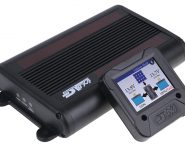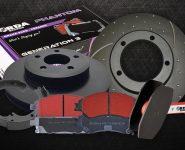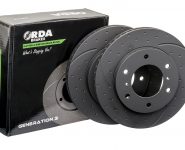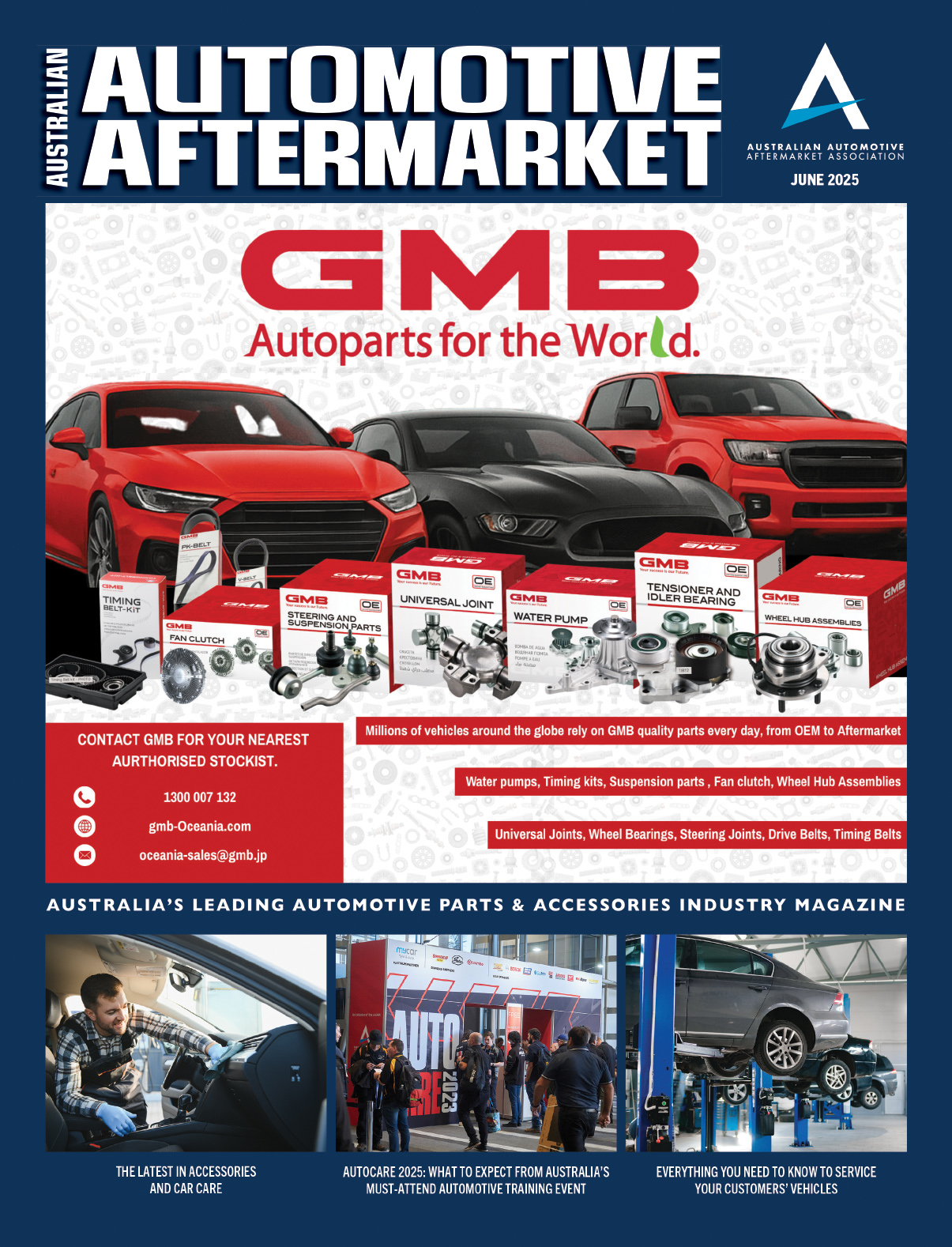THE RIGHT TOOL FOR THE RIGHT JOB
NAPA Auto Parts discusses what you need to know before servicing, maintaining, or repairing an electric vehicle
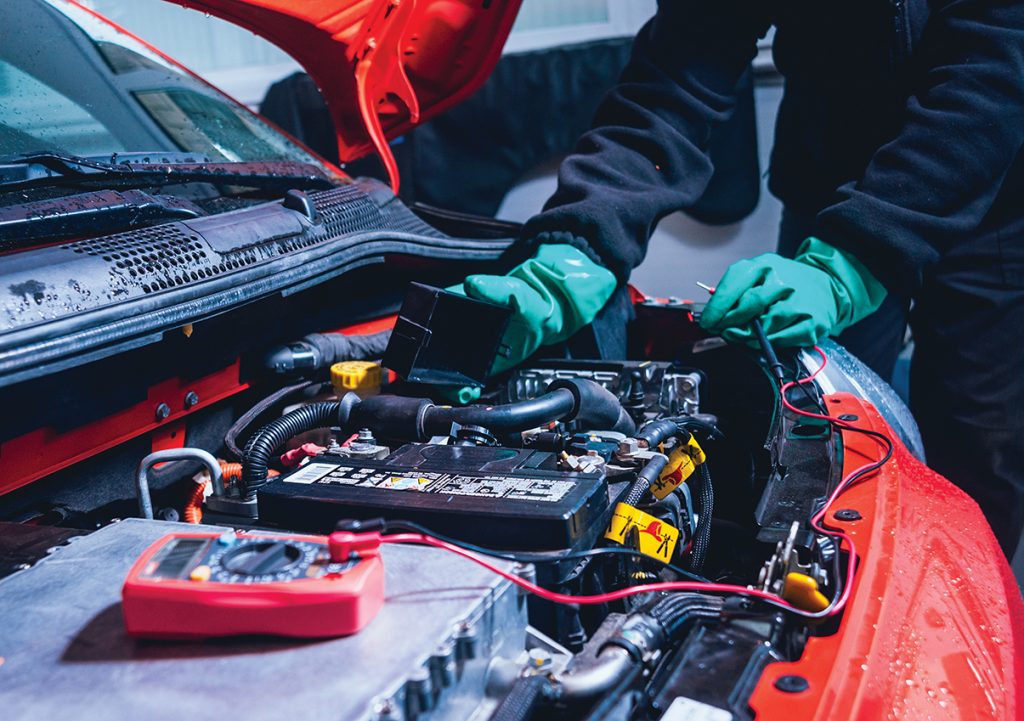
In a lot of ways an electric vehicle is just like any other vehicle on the road: its primary purpose is to move passengers from one place to another. It is the same basic principle that has carried us past the days of the horse and buggy.
In fact, many of the early horseless carriages were actually electric powered. But modern electric vehicles deal in much higher voltages and amperages than anything on the road in the past few decades.
Anyone who already works on internal combustion engine (ICE) powered vehicles probably has a decent set of tools, but when it comes to servicing hybrid and electric vehicles (EV) there are a few more things to consider.
In this article, the experts at NAPA Auto Parts take a look at the right tools and equipment that are required to safely service, maintain and repair an electric vehicle.
Hand tools
Starting with hand tools the functions are pretty much the same. An insulated screwdriver still has a handle and a tip, wrenches still have jaws, sockets still have six or twelve points. The big difference comes down to stopping the flow of electricity either through the tool or to the user.
You have probably seen insulated tools before, likely a screwdriver in a set. These are pretty common for household electrical work. But did you know there are insulated tools and then there are non-conductive (composite) tools?
An insulated tool is typically made of metal (like a normal tool) which is then covered with a non-conductive substance like epoxy or rubber. This interrupts the flow of electricity from the tool to the user’s hand. But insulated tools need to be checked regularly to verify if the insulating coating is still intact.
Some tools use different coloured insulation layers to signal if a tool is ready for replacement. If the warning layer is visible, the tool is no longer safe to use. The last point is one that normally isn’t a part of hand tool ownership.
Hand tools either work or they are broken. Insulated electric tools may still technically work as say a wrench, but they will not be safe to use around electrical components once the insulation has been compromised. Composite tools are actually made differently compared to normal tools.
For example, a composite ratchet will have a handle made completely of a strong non-conductive material with no metal inside. This prevents electricity from traveling from the head of the ratchet to the user’s hand.
Composite sockets will still have a metal hex insert, but that metal is attached to a strong nonconductive composite, and then to the square drive. The non-conductive material breaks the circuit and blocks the flow of electricity.
Diagnostics
Working on any modern vehicle requires the right diagnostic equipment regardless of whether it’s an electric vehicle or not.
While a technician working on an electric vehicle won’t be diagnosing ignition or emissions problems, they will be chasing down other normal issues like bad sensors or damaged modules.
One key consideration with electric vehicles is the power handling capability of the diagnostic tool. For example, any multi-meter intended to be used on an electric vehicle must be rated CAT III to handle the high voltages often found inside these vehicles.
Likewise, the test leads need to be also rated for higher voltage use. While internal combustion engines are starting to use 48-volt systems in areas, some electric vehicles operate in the hundreds of volts so special EV diagnostic tools are a must.
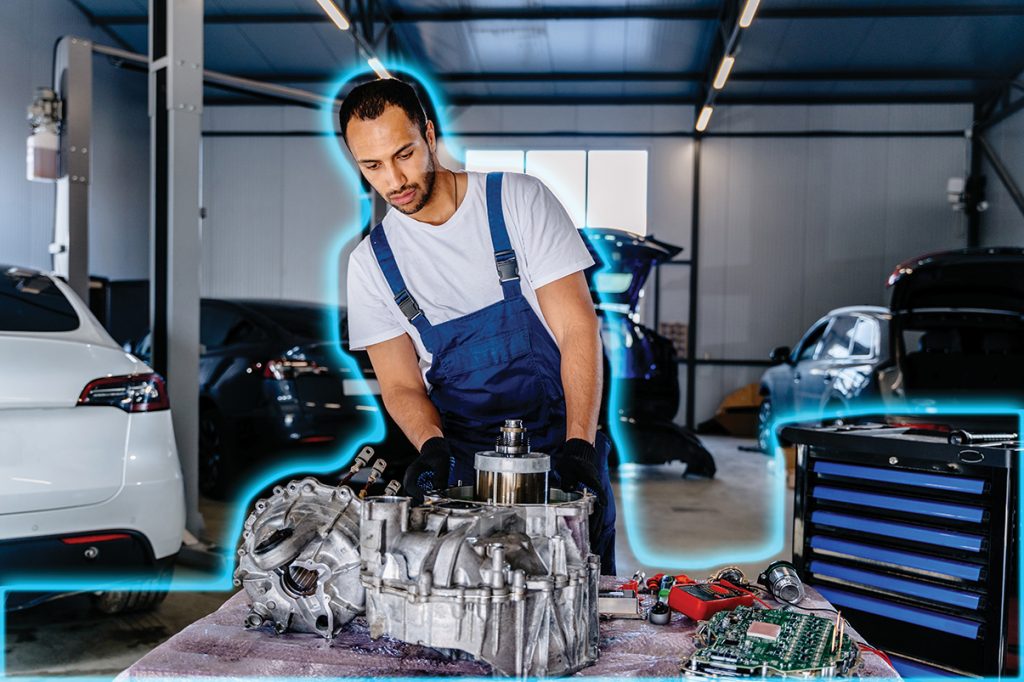
Workshop Equipment
Your workshop may already be well equipped to work on common internal combustion vehicles, but there are some special electric vehicle repair tools you may need to consider. For example, your two-post lift likely needs different footpads to correctly lift electric vehicles.
You also need to make sure your lift can be configured to handle different vehicle weight biases (front to rear) for balanced lifting. Speaking of lifting, many electric vehicle and hybrid batteries weigh a considerable amount and are mounted to the bottom of the vehicle.
Safely removing one of these batteries should be left up to a specialised lifting table designed for the task. Most people are not aware that air conditioning compressors used in hybrid and electric vehicles have a special type of oil that is designed to be non-conductive.
That means you will need an air conditioning service machine that can prevent cross-contamination between systems. Considering that the air conditioning compressor on a hybrid or electric vehicle is powered by a high-power electric motor rather than an engine pulley, the different oil requirement makes sense.
Workshop Safety and Personal Protective Equipment
It is a good idea to wear gloves when working on any vehicle, but when working on an electric or hybrid vehicle it is mandatory.
Specifically insulated safety gloves designed to handle high voltage. Gloves must also be tested before each use for any tears, cuts, leaks or wear that might allow a path for electricity to travel. A good pair of safety boots with EH (electrical hazard) rating is also recommended.
It is also important to let others know when a technician is working on a hybrid or electric vehicle. Placing orange cones around the bay and a line of caution tape signals to others that the vehicle is not to be approached.
The safety gear worn by the technician is only designed to protect one person, all others must keep their distance during servicing of electric vehicle components.
Any shop that is considering working on electric or hybrid vehicles needs an insulated rescue hook. In the unfortunate event of a technician suffering an accident while working on an electrical component the insulated rescue hook allows the victim to be pulled away from the electrical source without endangering the rescuer.
This also means that a technician should never work on a hybrid or electric vehicle alone, there should always be another person present. Lastly anyone attempting to service an electric or hybrid vehicle should be properly trained.
Old fashioned “on the job” training may be fine for most maintenance procedures on a normal car, the same cannot be said for electric or hybrid vehicles. The potential power output of an EV battery is just too high to risk working on a vehicle without at least basic training.
For more information about Tools and Equipment, visit NAPA Auto Parts at www.napaparts.com.au



